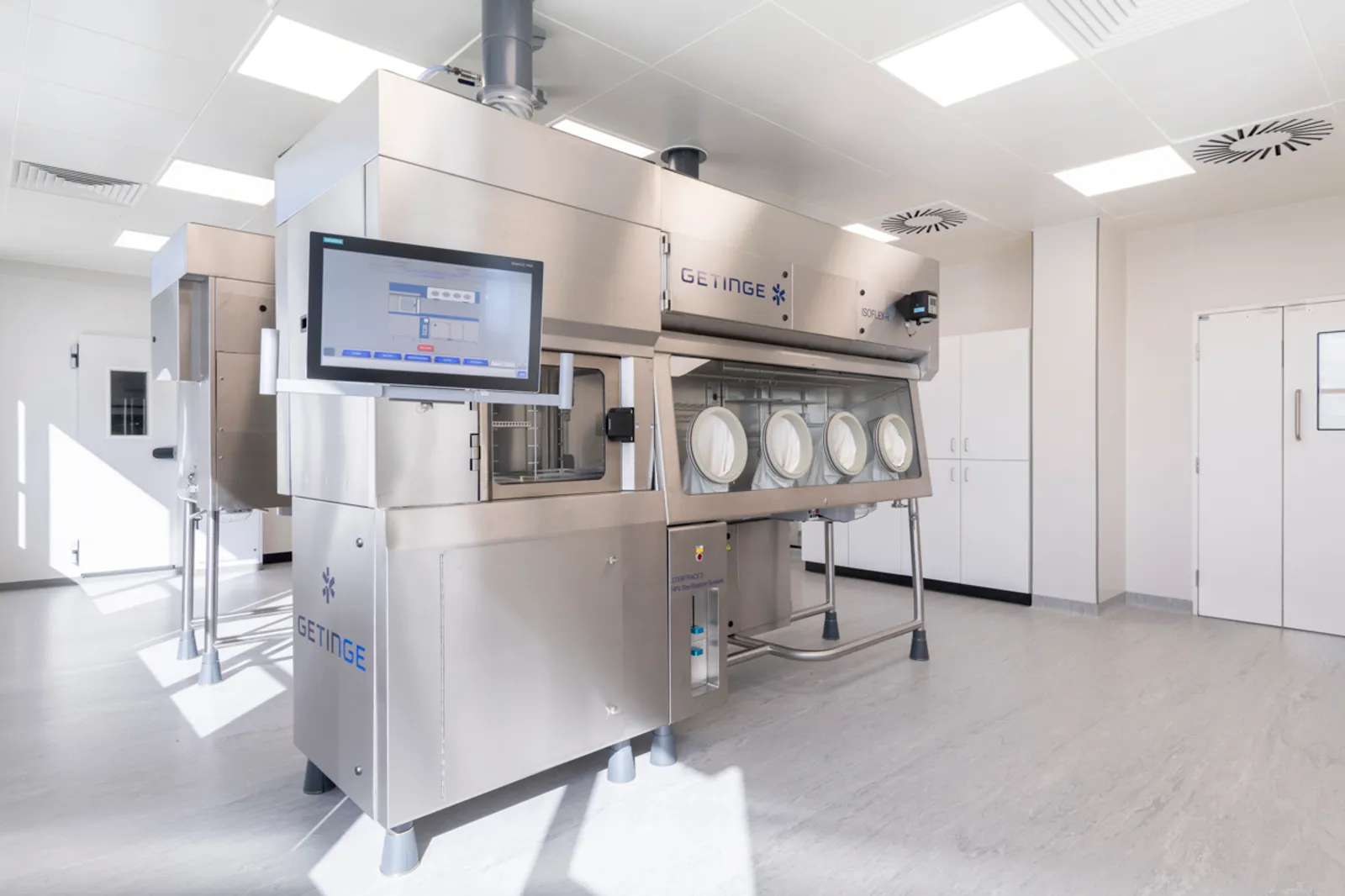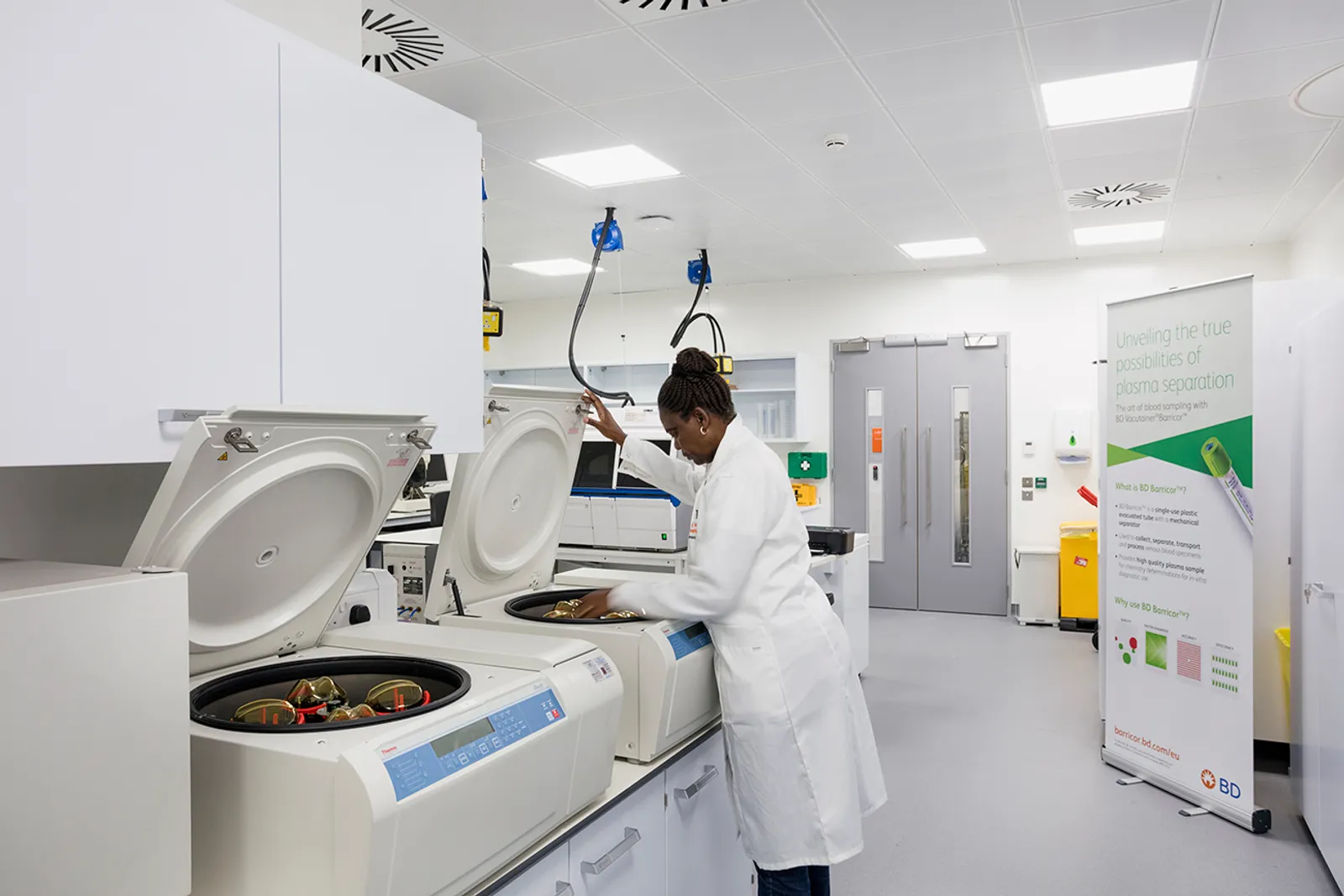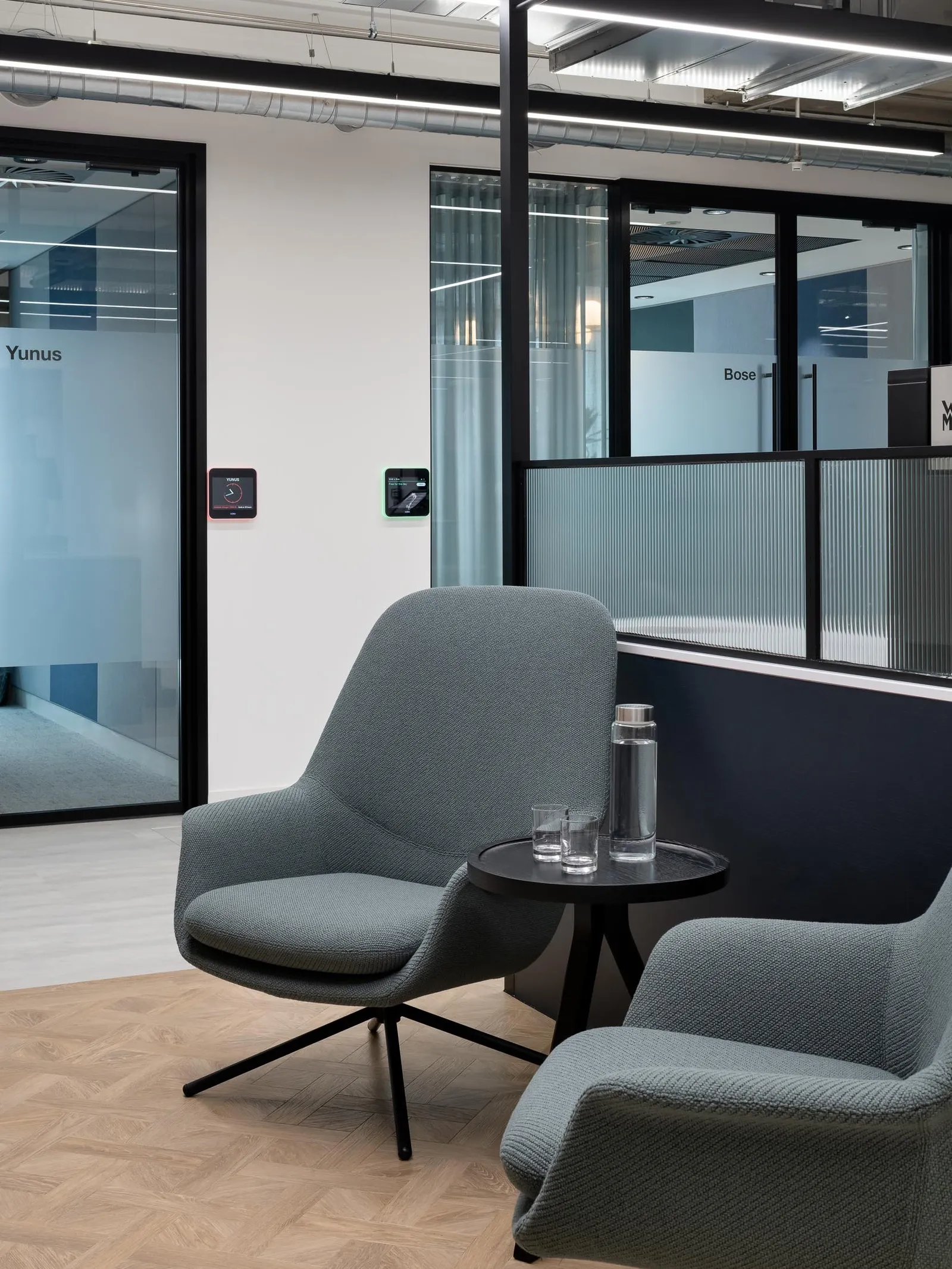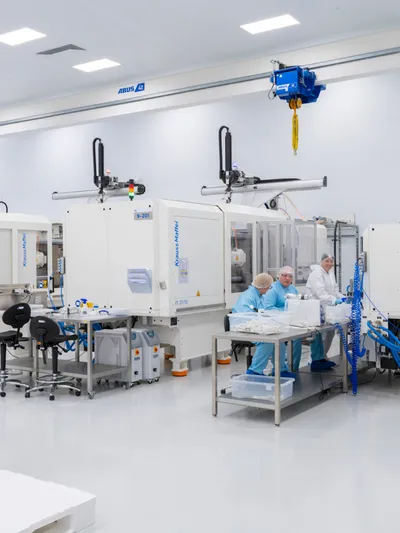The advancements in AI over the past few years have touched almost every industry, and its role in scientific research will undoubtedly be transformative as new technologies emerge.
There is a growing demand to integrate AI into existing laboratory environments. Doing so relies on innovative laboratory design to ensure seamless implementation and that this technology can maximise value and support scientific work.
At Area, we are committed to designing future-ready laboratories that can grow with advancements in AI and technology. So, get in touch if you are ready to explore how we can enhance your research and empower scientific innovation and new discoveries through our design process.

What is AI in the context of laboratory science?
Bringing AI into laboratory science means the convergence of physical and digital research. AI technology is no longer just a nice to have in laboratory design but instead plays an integral role in creating improved efficiencies, allowing for real-time data analysis and automating complex and time-consuming tasks and processes.
Its integration shapes how labs are structured, how scientists interact with their environments, and how research evolves, making intelligent, adaptable design essential for future-ready scientific spaces.
The Evolving Role of AI in Scientific Research
AI is prevalent across many applications in the scientific field, including predictive modelling, image analysis, experiment automation and data management. Using AI to streamline processes, improve efficiencies and create faster delivery cycles supports scientific research and discovery. AI can also significantly reduce instances of human error, enhancing scientific researchers' accuracy.
The shift towards data-rich, computationally driven research processes is driven by increasingly sophisticated AI, which can analyse complex sets of data at speed, highlight patterns, optimise experimental design and even predict outcomes before tests are conducted.
The Challenges of Integrating AI into Traditional Lab Environments
While scientific laboratories certainly benefit from AI integration, achieving this is often a complex process. Many laboratories lack the digital infrastructure necessary to implement AI technology.
On top of this, physical constraints pose a problem with AI-related hardware needing space that some labs simply do not have. Other barriers include resistance to change or uncertainty around the reliability of AI for job personnel, as well as data security and compliance concerns.
Key Design Considerations for AI-Enabled Laboratories
When implementing AI in a traditional laboratory, designers must consider several key considerations. The space must boast a robust digital backbone and have established infrastructure and connectivity to support AI integration. High-speed data networks, cloud connectivity and IoT readiness are all vital components. Power requirements must also be met, and cooling systems for AI hardware must be in place.
Designers must also carefully work out the physical space to ensure their layout supports the purpose. Some factors to consider include zoning labs for traditional wet lab work alongside spaces for effective data processing and integration of robotics and automation zones.
AI works most effectively when those working with it are fully onboard. Therefore, designing spaces for intuitive human-machine interaction can also be crucial in successful AI integration. Modular designs can leave flexibility for evolving technologies, and infrastructure should be adaptable to future-proof labs for upgrades.
Sustainability is another key consideration. Energy use and heat output from AI systems is high, and therefore, working to mitigate that by designing for maximum efficiency with intelligent systems and green materials will help ensure the laboratory is sustainable and cost-effective.
Benefits of Design-Led AI Integration
As artificial intelligence becomes an increasingly essential laboratory science component, thoughtful design is critical in unlocking its full potential. A design-led approach ensures that the physical environment works harmoniously with advanced technologies, fostering operational excellence and scientific innovation and streamlining workflows through spatial and technological harmony.
Accelerating innovation with collaborative AI hubs. When AI tools are effectively integrated, those using them can move between conducting experiments, capturing data, and analysing results with minimal friction to ensure processes remain intuitive and efficient.
Future-proofing investments by creating adaptive lab environments.
AI is on a steep trajectory, and advancements in this technology will continue to push the boundaries of what we thought possible. Enabling flexibility and easy modification to incorporate these advancements protects long-term investment by reducing the need for costly renovations or retrofits down the line.
Attracting top-tier talent through intelligent, inspiring workspaces. Working in a cutting-edge workspace that utilises the latest equipment and technology makes it attractive for scientists looking to work at the top of their fields.
By implementing AI and considering the workspace as a whole, Area hopes to turn the heads of the next generation of scientists, engineers, and data professionals seeking workplaces that reflect the cutting edge of science and technology.
Area's Approach to Future-Ready Lab Design
Undoubtedly, AI is playing an increasingly pivotal role in scientific research. At Area, we are committed to keeping our finger on the pulse when understanding emerging technologies and scientific needs.
We always take a collaborative approach in our laboratory design process, consulting with clients and researchers from day one to ensure that our design and build are tailored to your unique needs and result in an inclusive, efficient and secure environment that empowers workers to operate at their full potential, adapt to evolving workflows, and focus on the breakthrough discoveries that drive progress.
We believe that design is a strategic enabler of scientific advancement, so if you're ready to see how we can help create the next generation of smart labs, get in touch today.




